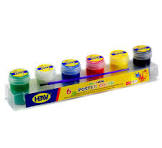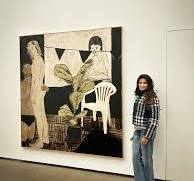The Timeless Beauty of Raphael Paintings
Raphael, born Raffaello Sanzio da Urbino, was an Italian painter and architect of the High Renaissance. His artistic legacy is characterized by grace, harmony, and a profound understanding of human emotion. Raphael’s paintings continue to captivate art enthusiasts and scholars alike, centuries after his passing.
The Artistic Mastery of Raphael
Raphael’s mastery of composition, color, and form is evident in his iconic works such as “The School of Athens,” “The Sistine Madonna,” and “The Transfiguration.” His ability to convey complex emotions through subtle gestures and expressions set him apart as a true virtuoso of the Renaissance era.
Influence on Art History
Raphael’s influence on art history is immeasurable. His innovative techniques and aesthetic sensibilities paved the way for future generations of artists. The harmonious balance in his compositions and the meticulous attention to detail continue to inspire painters around the world.
Legacy and Appreciation
Today, Raphael’s paintings are celebrated for their timeless beauty and universal appeal. Art lovers flock to museums and galleries to witness the brilliance of his brushstrokes firsthand. The enduring popularity of Raphael’s works serves as a testament to his unparalleled talent and artistic vision.
Conclusion
Raphael’s paintings stand as a testament to the enduring power of art to transcend time and resonate with viewers across generations. His legacy lives on through his masterpieces, reminding us of the boundless possibilities of artistic expression.
Exploring Raphael’s Mastery: 8 Tips for Appreciating His Paintings
- Study Raphael’s use of color and light to create depth and emotion in his paintings.
- Pay attention to the graceful poses and gestures of the figures in Raphael’s works.
- Notice the intricate details and delicate brushwork in his paintings.
- Explore the themes of classical mythology, religion, and history depicted in Raphael’s art.
- Compare Raphael’s compositions with those of other Renaissance artists to understand his unique style.
- Learn about the techniques Raphael used, such as sfumato and chiaroscuro, to achieve realistic effects.
- Visit museums or galleries that house Raphael’s paintings to see them up close and appreciate their beauty.
- Read books or articles by art historians to gain a deeper insight into Raphael’s life and artistic legacy.
Study Raphael’s use of color and light to create depth and emotion in his paintings.
Studying Raphael’s use of color and light reveals his exceptional ability to infuse depth and emotion into his paintings. Through carefully selected hues and strategic placement of light and shadow, Raphael masterfully constructs scenes that evoke a sense of realism and evoke profound emotional responses from viewers. His skillful manipulation of color tones and lighting not only adds visual richness to his artworks but also imbues them with a captivating sense of drama and dynamism, showcasing his unparalleled talent as a Renaissance master.
Pay attention to the graceful poses and gestures of the figures in Raphael’s works.
When exploring Raphael’s paintings, it is essential to pay close attention to the graceful poses and gestures of the figures depicted in his works. Raphael had a remarkable ability to infuse his characters with elegance and fluidity, capturing subtle nuances of emotion and movement through their gestures. By observing the meticulous details of how each figure is positioned and how they interact within the composition, viewers can truly appreciate the depth and sophistication of Raphael’s artistic vision.
Notice the intricate details and delicate brushwork in his paintings.
When observing Raphael’s paintings, it is essential to pay close attention to the intricate details and delicate brushwork that characterize his masterpieces. The meticulous precision and fine craftsmanship evident in his works reveal the depth of his artistic skill and dedication to perfection. By examining the subtle nuances and intricate patterns within each painting, viewers can truly appreciate the level of artistry and expertise that Raphael brought to his creations, showcasing a level of detail that continues to awe and inspire art enthusiasts worldwide.
Explore the themes of classical mythology, religion, and history depicted in Raphael’s art.
Explore the rich tapestry of themes in Raphael’s art, where classical mythology, religion, and history intertwine to create a captivating narrative. Through his masterful brushstrokes, Raphael breathed life into timeless stories from ancient myths, biblical tales, and historical events. Delve into his paintings to unravel the intricate layers of symbolism and meaning that reflect his deep understanding of human experience and cultural heritage. Raphael’s ability to blend these diverse themes with grace and harmony showcases his unparalleled skill as a storyteller through art.
Compare Raphael’s compositions with those of other Renaissance artists to understand his unique style.
To gain insight into Raphael’s distinctive style, it is valuable to compare his compositions with those of other Renaissance artists. By examining how Raphael approached composition in relation to his contemporaries, such as Leonardo da Vinci and Michelangelo, one can appreciate the nuances that set his work apart. Raphael’s ability to achieve a harmonious balance of form and emotion within his compositions showcases his unique artistic vision and technical skill, making him a standout figure in the history of Renaissance art.
Learn about the techniques Raphael used, such as sfumato and chiaroscuro, to achieve realistic effects.
To truly appreciate Raphael’s paintings, it is essential to delve into the techniques he employed to achieve such remarkable realism. By studying methods like sfumato and chiaroscuro, one can uncover the secrets behind the lifelike effects in his works. Sfumato, with its subtle blending of tones and colors, lends a softness and depth to his figures, while chiaroscuro’s interplay of light and shadow adds drama and dimension. Understanding these techniques not only enhances one’s admiration for Raphael’s artistry but also offers insight into the mastery of a true Renaissance genius.
Visit museums or galleries that house Raphael’s paintings to see them up close and appreciate their beauty.
To fully appreciate the exquisite beauty and artistic mastery of Raphael’s paintings, it is highly recommended to visit museums or galleries that showcase his works. Seeing Raphael’s paintings up close allows viewers to immerse themselves in the intricate details, vibrant colors, and emotive expressions that define his artistry. By experiencing these masterpieces firsthand, art enthusiasts can gain a deeper understanding of Raphael’s talent and the timeless allure of his creations.
Read books or articles by art historians to gain a deeper insight into Raphael’s life and artistic legacy.
To gain a deeper insight into Raphael’s life and artistic legacy, it is advisable to read books or articles written by art historians. These resources provide valuable context and analysis that can enhance one’s understanding of the artist’s work, influences, and contributions to the art world. By delving into scholarly writings on Raphael, art enthusiasts can uncover hidden layers of meaning in his paintings and appreciate the nuances of his artistic vision with greater clarity.





